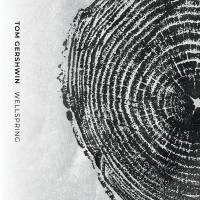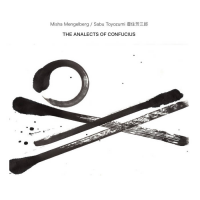Home » Jazz Articles » Extended Analysis » Tony Grey: Tony Grey: ...Moving
Tony Grey: Tony Grey: ...Moving
 Tony Grey
Tony Grey...Moving
Self Produced
2004
With the release of ...Moving England's Tony Grey has gone from displaying the most potential to living up to it as fast as any musician that's swung though Berklee's doors. Actually, the exception would be his current employer, Japan's prodigy/goddess of piano, Hiromi , who is spearheading a small but significant movement to put some electricity, both literally and figuratively, back into jazz. Tony's the cat responsible for laying down the monster grooves next to Anthony Jackson on her sophomore effort, Brain , and with the equally gifted young Slovakian drummer, Martin Valihora , working it all out on the gig.
Tony began playing bass at age 20 and is now a whopping 29, and appears to be the only artist I know of that came to jazz after a successful sabbatical in a boy band (called Bliss ). Tony's most obvious asset besides talent is having the head and ears to cut to the chase, connecting all the dots that have popped off his page, assembling the creme de la creme of Boston's and Berklee's world-reaching talent pool. Dave Fiuczynski , now a funky professor of guitar styles at Berklee, is along for the ride here on four tracks. They've gigged together since Fuze's arrival in Boston, but more importantly, both recognize that Berklee's greatest asset isn't its faculty, its guest-artists or its setting, but its student body.
It's just as much the how Grey uses the cast as the who he brings in that makes this one special. The amazing Indian guitarist, Prasanna brings his ragabop and literal upbeat emphasis to the lilting "Dil Chahata Hai." A thoughtful six-string bass interlude not only starts the tune off straight but immediately hips the listener to Tony's focus on the uncompromisingly professional sound of this independent outing. There's plenty of presence and headroom in the woofer-bouncing transients here that are missing on even the most professional recordings of the six-string electric behemoth by the majors. Prasanna sets the well-endowed bass sound off with his signature tone, which is surprisingly thin, yet gorgeously and personally so. The beautiful and uplifting tunesmithing of Grey is way beyond his years and its appeal should be wide-ranging, from fuzoid tech-heads to those venturing wayward from smooth-jazz. Throughout it seems that just as the accessibility curve peaks the musicality quotient climbs, in this case in the form of Prasanna's otherworldly phraseology. No other guitarist today brings as much authentic ethnic (or is that authethnic) complexity to the table. Taking the solo section to the next level is well-nigh impossible but Grey's decision to slam it up against the amazing gospel-inflected pop-funk phraseology of classmate and other band mate Oliver Rockberger does the trick. Fellow Olde and now New Englander Rockberger basically takes Russell Ferrante and Stevie Wonder to meet Keith Jarrett for a round of drinks from his font of crystallized ideas.
Further gifts to the Boston scene and Berklee faculty lunchroom are the remarkable talents and still ultramodern, ultrahip stylings of Kenwood Dennard , who is on board for the standout tune, "White Woods." Grey was onto the live drum'n'bass tip before professor Fuze made him buckle down with his jam projects Tao and Kif —now add Grey to the short list of bassists inventing this style. An effortlessly clever synth breeze and Fuze's skittering legato set up the head and then a seemingly tossed-off, behind the beat improvisation by yet another gifted member of the recent graduating class— tenorist Walter Smith III . An inventive, double-tracked bass break splices in, changing the tune immediately to a more dissonant animal, still over the repeating jungle motif.
What follows deserves this paragraph- a transcendent electronic keyboard spot by one Romain Collin -a five and half star moment that helps catapult this offering into five-star debut category. On one level it's a metaphor for a lot of this record;that is, it takes a thread of jazz's electronic fusion heyday and synthesizes/crystallizes it. Think of all those distorted Rhodes solos by Herbie, Chick, Zawinul and Jarrett during electric-period Miles and cram them into a shining, stunning 105 seconds. It's a truly amazing take that's also an amazing "take" on that period, like someone pointed Bitches Brew and On the Corner through some atomic ray gun. I'd recommend this solo and Romain Collin to anyone with a remote interest in the sonic and psychic possibilities of vintage Rhodes sounds. Fuze floats us out with more quick legato snippets echoing the motif of the head, then handing off again to Smith, who with Dennard's impossible drumming, loft us on out to the next tune. Make sure this one's on your homemade compilation of the best fusion tunes in the new millennium!
Now comes the time to let it be known that Tony Grey is a well-loved protege of one Master John McLaughlin and bears his influence not only in music but in life. As such, it seems he also shares McLaughlin's propensity for Indian/eastern influences and gifts for applying lessons learned therein. So then, it is no mere freakish coincidence that Grey works with two guitarists who now call Boston home, Prasanna and Fuze, whose playing is brimming with microtonal madness and bona fide ethnic elements. Similarly, it's no coincidence that Grey chooses Fuze and yes, another amazing Berkleeite, frame-drummer and percussionist Matt Kilmer , to pay a measure of homage to the McLaughlin Trios. Here, Fuze takes the opportunities presented by Grey's "Floating River Yangtze," basically a pop-Indian folk song, to wax emotively on his fretless neck in unusually, for him, largely inside territory. Using open strings to double-stop his reservoir of ideas, Fuze simply brings a tear to our collective eastern eye. Tony Grey recognizes better than most that stepping into the studio with Fuze is not merely tantamount to playing with another modern guitarist who's absorbed McLaughlin's influence, but one of the few elite players of his generation that stands as McLaughlin's contemporary, resolutely pushing the instrument toward its future. Grey holds back here only to then deliver his finest solo spot of the set. Another young bassist who openly acknowledges the influence of Matt Garrison, he's forged his own multi-digit right hand technique that facilitates spinning out unique lines able to breathe along with the melodic contour.
You'd think the parade of great young Berklee players had receded, but the seamless drum stylings of Chris Farr are spotlighted on the aptly titled "My Way Your Way." Of all things, this one takes a recycled Barry White modulation as the takeoff point for a musical clinic in style-slamming. Romain Collin is again featured here, first in conventional ways and by tunes end, in wildly modernly aggressive fashion. Props to Tony and Romain for jumping into the Rhodes revival full on. An east coast versus west coast sample is used to swing the tune Cali-way with smooth stylings on sax and electric piano by Gilad Ronin (Berklee again) and Collin, respectively. Farr's drums pump progressively more complex rhythmic structures back into a sequence that sounds as if it were composed to show us the beauty and commonality in smooth versus hard styles and open our ears to the validities within each. Grey shows us his way with a wraparound solo phrase before the tune vortexes into harder rhythms and more of Collin's striking synth runs.
"Suryasta" is where I'll end the tune descriptors while pointing out I've run in order from tune two through six of the nine song set. This handful alone stakes Grey's claim to the title of the newest great composer on the fusion scene. To me, "Suryasta" is the jewel in that set, featuring the Indian diva Falguni Shah , another world-class, locally based talent with whom Tony's been gigging for a few years now. This one sounds as if he's put in a good six hours a day crafting a melody and song structure that showcases her amazing gifts in ways that some excellent higher profile work has not. Her opening salvo against Grey's synth string washes will, if you have an inkling towards this kind of sound, make the hair on the back of your neck stand up. Drummer Jordan Perlson adds just the right amount of modern accent while Rockberger, again, injects gorgeous familiarity- teardrops of emotive commentary- into the mix. All the while, a mysterious sitar-like sample follows Grey's countermelody, voiced in the high register of the bass, most effective when followed closely by Rockberger. I'd go so far to say that as great as this debut is for Tony, and as great as Ms. Shah has sounded in other endeavors, they should probably both drop what they're doing in favor of a full-on collaboration. But luckily, although this release reeks of the urgency and vibrancy of life (I can think of few heavier compliments to lay on a recording) there should be plenty of time for the outrageously talented young cast assembled herein to work further magic, individually and collaboratively. To call this one the greatest gift from Berklee's graduating class of '04 is understating—an auspicious beginning, indeed.
Personnel: Tony Grey: bass, keyboard (1, 5, 6, 8); Oliver Rockberger: piano (2, 6); Kenwood Dennard: drums (3); Falguni Shah: vocals (6); Lyndon Rochelle: drums (7); Chris Farr: drums (2, 5); Romain Collin: keyboards (3, 5, 7, 8); Deantoni Parks: drums (1, 8); Dave Fiuczynski: guitar (3, 4, 7); Dan Brantigan: trumpet and EVI (1, 7, 8); Jordan Perlson: drums (6); Prasanna: guitar (2); Walter Smith III: saxophone (3); Matt Kilmer: percussion (4, 6); Gilad Ronin: saxophone (5).
Track Listing: Awaken; Dil Chahata Hai; White Woods; Floating River Yangtze; My Way Yur Way; Suryasta; Free Fall; Any Which Way; Lullabye for Life.
Track Listing
Personnel
Tony Grey
bass, electric
Album information
Title: Tony Grey: ...Moving | Year Released: 2004 | Record Label: Self Produced
Tags
PREVIOUS / NEXT
Support All About Jazz
 All About Jazz has been a pillar of jazz since 1995, championing it as an art form and, more importantly, supporting the musicians who make it. Our enduring commitment has made "AAJ" one of the most culturally important websites of its kind, read by hundreds of thousands of fans, musicians and industry figures every month.
All About Jazz has been a pillar of jazz since 1995, championing it as an art form and, more importantly, supporting the musicians who make it. Our enduring commitment has made "AAJ" one of the most culturally important websites of its kind, read by hundreds of thousands of fans, musicians and industry figures every month.


















